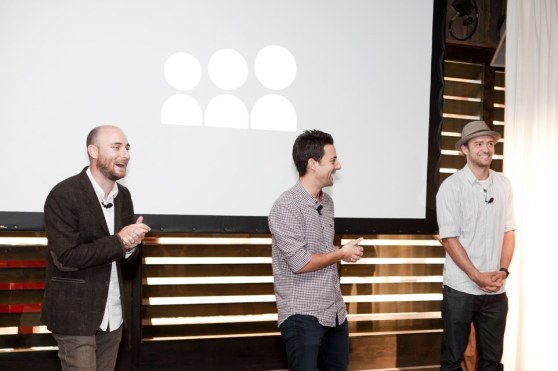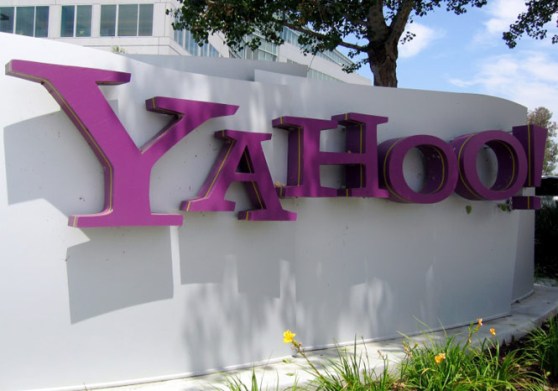6. The rise and fall of social video apps

2012 held the promise of a brutal war between social video apps that just never came to fruition.
Early in the year, Viddy and Socialcam seemed destined to go head-to-head in a battle to claim the “Instagram of video” title. Both applications experienced meteoric rises the likes of which we’ve never seen before.
Viddy added millions of users with each passing week. The startup seemed unstoppable once it announced in May that it had hit 30 million users and raised $30 million more in funding. Celebrity users and backers certainly added to the hype.
But Viddy’s bubble burst just as quickly as it inflated. Today, Viddy claims to have 40 million registered users, but its monthly active user base may actually be closer to 600,000 people.
We knew that the social video market wasn’t quite what it seemed when Autodesk announced that it had agreed to buy Socialcam for $60 million. The exit was a fine one, but it seemed premature for a young company on the rise. At the time, Socialcam’s user growth numbers were unbelievable. In June, the startup had 83.6 million monthly active users connected to Facebook. Instagram, for comparison, had 30 million registered users in April, a month before it sold to Facebook in a landmark deal that was originally valued at $1 billion.
The math only makes sense when you consider that both Socialcam and Viddy were benefiting from the Facebook Open Graph effect. The so-called “Facebook Timeline bump” drove a smattering of sign-ups and traffic to many third-party applications, social video apps included. These apps briefly benefited when they were prominently featured in Facebook’s News Feed, Ticker, and Timeline. But Facebook eventually tweaked its algorithms, and for Socialcam and Viddy, the bump proved short-lived.
Socialcam’s audience, with 3.8 million monthly active users connected to Facebook, is down more than 95 percent from June.
7. LinkedIn shines
In a year largely defined by consumer Internet flops, LinkedIn managed to fly, and fly high.
At the start of the year, LinkedIn shares were trading in the mid $60s. Now the professional social network is inching closer to $120 a share, meaning it has almost doubled its value in 2012.
Compare that to the disastrous market misadventures of Facebook, Zynga, and Groupon, and LinkedIn looks to be the one consumer Internet company that investors believe is worth its weight in gold.
LinkedIn closed its third quarter with 187 million members and $252 million in revenue.
8. Color goes black

Had all gone according to plan, 2012 would have been the year the world finally saw the beauty in Color, a live video broadcasting application for Facebook. Instead, we all got to witness the stumbles of a startup that never found its legs.
Less than two years after a flashy, $41-million launch, Color is fading to black. The application, which started its life as an overwrought photo-sharing app, will officially shut down on December 31.
Ballyhooed partnerships with Facebook and Verizon proved inconsequential in raising the company’s profile, but a scandalous lawsuit is certain to ensure that Color leaves a lasting legacy. In the suit, Color co-founder Adam Witherspoon leveled damning personal and professional accusations ranging from abuse to embezzlement against chief executive Bill Nguyen.
The only silver lining in this convoluted saga was that Color managed to eke out a little deal with Apple, which purchased some of the company’s assets and hired most of the remaining engineers. The rest of the company, as VentureBeat first reported, will be wound down.
9. New MySpace

The biggest shocker of 2012 was the return of MySpace.
It all started with a simple “THIS IS MYSPACE” tweet from MySpace backer Justin Timberlake in September. The tweet, which included a link to a teaser video for the totally reimagined site, went viral and got people excited to see more.
THIS IS MYSPACE http://t.co/pPKObXyB #NEWMYSPACE
— Justin Timberlake (@jtimberlake) September 24, 2012
Then, in November, more than a year after Chris and Tim Vanderhook paid $35 million for the Internet’s biggest joke, the Specific Media executive brothers showed the world what was hiding up their sleeves: a beautiful, imaginative, and inherently fun site dedicated to the music community and creative professionals.
After spending hours with the site, I concluded this in my review: “Wrapped in a pretty package and equipped with brains to match, MySpace feels too good to be true. It’s not.”
In 2013, we’ll have a better idea of whether MySpace can shed its bad rap for good and come to mean something fresh and exciting to a new generation of web users.
10. Yahoo the part-time patent troll

With the affable Marissa Mayer now at the helm of Yahoo, it’s easy to forget that the Internet titan of yore was on a direct path to becoming the most hated company in Silicon Valley.
In March, Yahoo, under Scott Thompson’s leadership, filed suit against Facebook for patent infringement. The Sunnyvale company was seeking damages around 10 social network-related patents covering everything from serving ads to instant messaging. The move looked like a cowardly ploy to boost Yahoo’s declining revenue figures, especially as the suit came just ahead of Facebook’s pending IPO.
The blackmail attempt got the web all riled up, and prominent industry figures including Mark Cuban, Fred Wilson, and David Sacks lambasted Yahoo for its patent-trolling tactics.
The companies sparred publicly for months until Thompson was ousted and Yahoo, under the interim guidance of Ross Levinsohn, came to its senses.
What social media moments captured your attention in 2012? We welcome your thoughts in the comments.
Crowd image via Shutterstock


